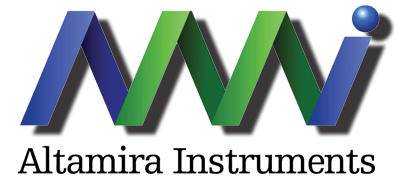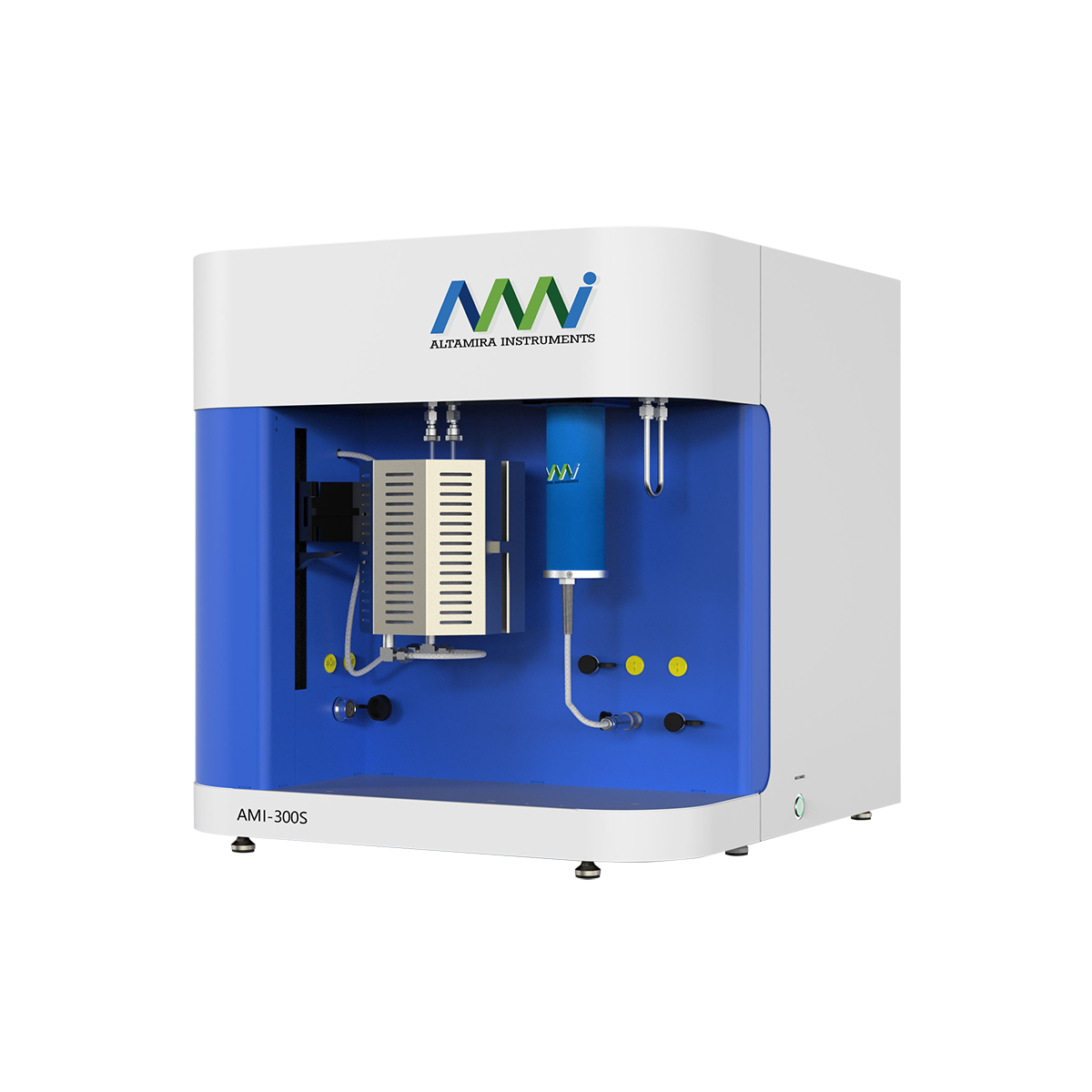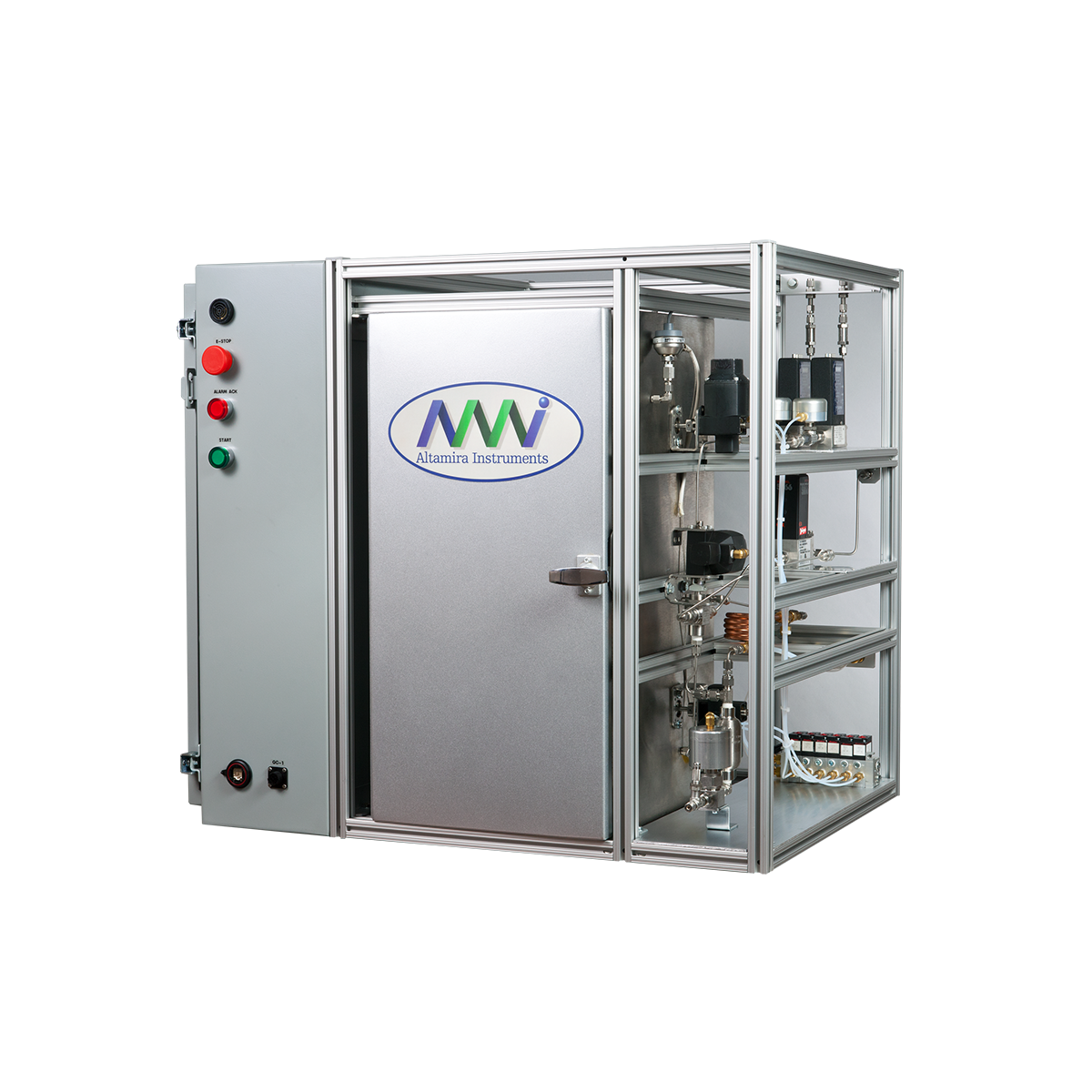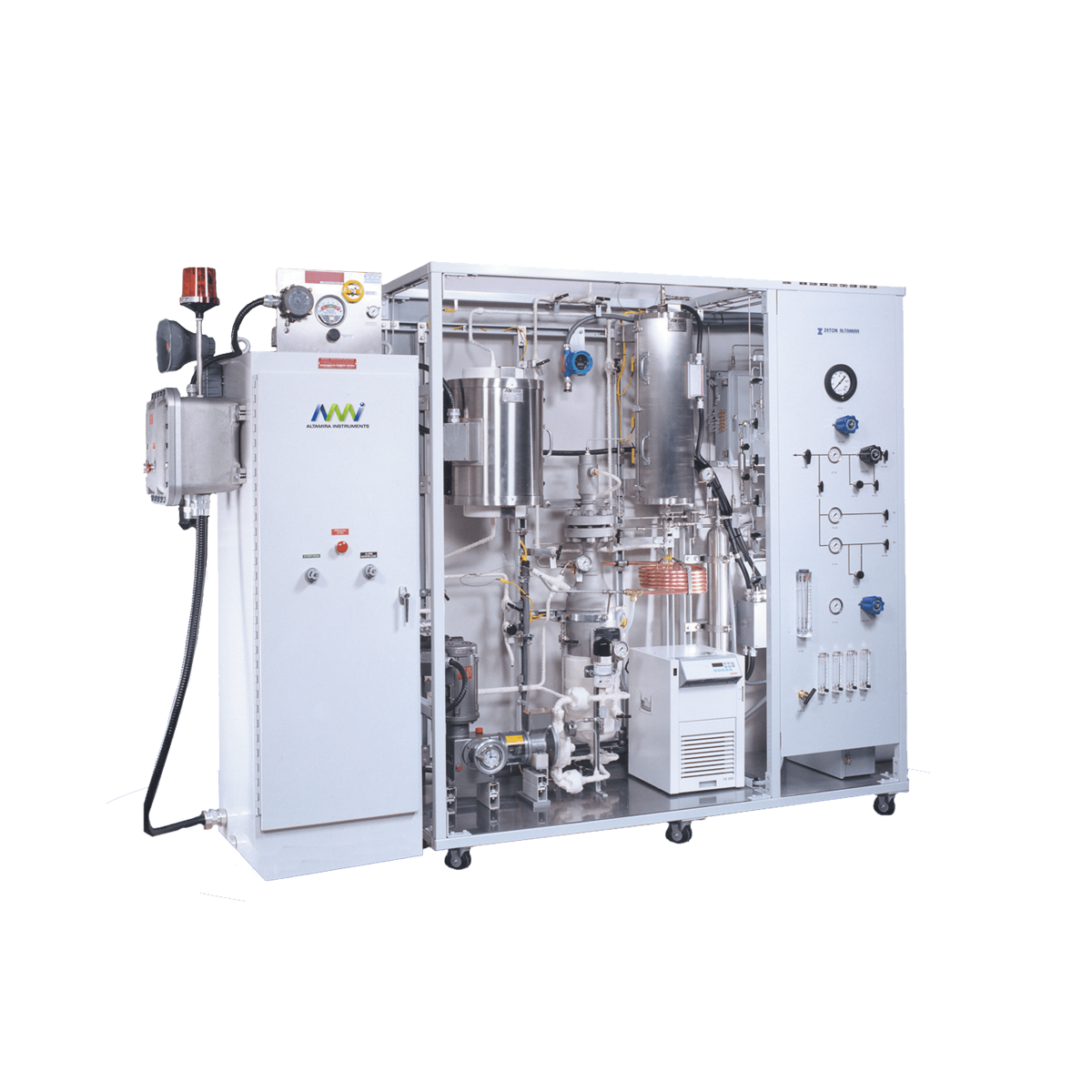Pulse chemisorption measurements are usually carried out in an atmospheric pressure flow system at ambient temperature. A small catalyst sample (0.1-1.0 g) is placed in a small diameter cell usually of quartz or stainless steel construction. After appropriate pretreatment to provide a clean, reduced metal surface, the sample is subjected to flow of an inert gas such as argon. A small amount of chemisorbing gas such as hydrogen is injected into this argon stream before it flows over the catalyst. The composition of the stream exiting the sample cell is monitored quantitatively by a thermal conductivity detector or similar device, and this signal is compared to that produced by the injected pulse of chemisorbing gas flowing through the cell in the absence of the sample. If the amount of chemisorbing gas in the injected pulse is known, the uptake by the catalyst may be calculated as shown below.
Figure 1. A 50 microliter pulse of CO in He a) after exiting a sample cell containing 0.5 g Pt/Al2O3; b) after exiting an empty sample cell. The difference in area of the two pulses gives the amount of CO taken up by the catalyst surface.
Often no signal is detected after the initial pulse of adsorbate over a clean catalyst surface. This indicates that the catalyst surface has adsorbed all of the chemisorbing gas in the pulse. The first pulse in the sequence shown in Figure 2 demonstrates this complete uptake. This pulse procedure may be repeated many times over the same sample. As the catalyst surface becomes saturated with adsorbate, less and less of the gas in each pulse is taken up by the sample. With each pulse, the size of the detector signal increases until it becomes constant and equal to the blank cell pulse signal. The total chemisorption uptake by the sample is then given by the sum of the uptakes from all of the pulses prior to saturation. The sequence of CO pulses shown in Figure 2 ends with saturation of the surface.
Figure 2. A sequence of pulses of CO in He over a clean Pt/A12O3 catalyst resulting in complete saturation of the surface.
Pulse chemisorption experiments can usually be completed more rapidly than other selective chemisorption techniques used for determining metal surface areas:
Volumetric chemisorption entails the equilibrium adsorption of adsorbate under sub-atmospheric pressure. The completion of a multiple-point adsorption isotherm can take from several hours to days.
Temperature-programmed desorption is carried out in a flow system as is pulse chemisorption. However, uptake is measured not during the adsorption step as in pulse chemisorption, but during a temperature-programmed desorption step following the adsorption step. This additional desorption step requires additional time.
Pulse chemisorption experiments may be standardized more readily than the other selective chemisorption techniques because there are fewer parameters to set. Given the inert gas flow rate, sample temperature, and pulse size, one should be able to compare pulse chemisorption experiments performed on different catalysts.
Volumetric chemisorption experiments must specify the pressure range of the isotherm, the temperature at each point, the time required to reach equilibrium at each point, and the degree of evacuation necessary to remove weakly chemisorbed molecules.
Temperature-programmed desorption experiments require an adsorption step in which time, temperature, and gas phase composition are all important variables. The time and temperature of the flush step between adsorption and desorption is also a parameter, as is the temperature ramp rate during the desorption step.
In practice, pulse chemisorption is often the preferred method of determining metal surface areas because of the advantages described above. However, some features of the pulse chemisorption technique make it difficult to use and can provide misleading results for some catalyst systems.
Flow techniques such as pulse chemisorption and temperature-programmed desorption often give lower uptakes than volumetric chemisorption. This results from the difficulty in measuring weakly held adsorbate molecules under inert gas flow. Between the pulses of adsorbing gas in a pulse chemisorption experiment, the atmosphere above the adsorbed species returns to that of the inert gas. Species which are very weakly held on the surface may desorb in an attempt to establish adsorption-desorption equilibrium at the temperature of adsorption. The molecules which desorb do so in a slow, continuous fashion which, if detected at all, might be manifested as a slight increase in the baseline rather than as a true peak. In essence, the molecules adsorbed in this weak mode are never counted, leading to an erroneously low number for the metal surface area. In contrast, the volumetric chemisorption technique measures the equilibrium adsorption amount and hence counts both strongly and weakly held species.
Chemisorption uptake determined by pulse chemisorption may differ from the results of volumetric chemisorption measurements to varying degrees depending on the catalyst system. A fairly good estimate of the fraction of the surface which yields weakly held species can be made by comparing the difference between the total and reversible chemisorption isotherms in a volumetric chemisorption experiment. The amount of “irreversible adsorption” should correspond most closely to the uptake measured in pulse chemisorption experiment.
Another common observation in pulse chemisorption experiments relates to this phenomenon of weakly held or reversibly chemisorbed species. After an exhaustive set of pulses over a clean metal surface results in apparent saturation of the surface (indicated by the appearance of sequential pulses of a constant size), it is often noted that this final pulse size is not the same as the size of the calibration pulse through an empty sample cell. It appears as if the catalyst could continue to adsorb a small, constant amount from each of an infinite number of additional pulses (See Figure 2). In reality this amount of chemisorbing gas, which is the discrepancy between the sample pulse at saturation and the calibration pulse, represents the amount of weakly held species which desorb invisibly between each pulse.
Pulse chemisorption experiments over some catalysts have been observed to give low uptakes for another reason. The pulse experiment is transient by nature, and the catalyst bed is contacted with each pulse of adsorbate for mere seconds. If the adsorption kinetics for the particular metal-adsorbate system are slow at the temperature of the experiment, much of the gas in the pulse may be carried away by the inert gas before adsorbing on the surface. Raising the temperature of the experiment may help to increase the rate constant for adsorption. If acceptable results cannot be obtained in this way, a temperature-programmed desorption experiment may be recommended instead of pulse chemisorption. The adsorption step in temperature-programmed desorption may be carried out over a prolonged period of time in a flow of pure chemisorbing gas, hence allowing the system time to saturate the surface even with slow adsorption kinetics.
Pulse chemisorption experiments provide a facile way of determining metal surface area in many cases, but each new catalyst-adsorbate combination must be studied to ascertain its applicability to the technique. Any system in which a large fraction of the adsorbed species are weakly held makes calculating complete surface coverage difficult. Any system in which the adsorption kinetics are slow compared to the residence time of the adsorbate pulse presents similar complications. Pulse chemisorption experiments have been carried out with a wide variety of catalysts though, and when used properly, the technique can become a routine and useful method of catalyst characterization.




